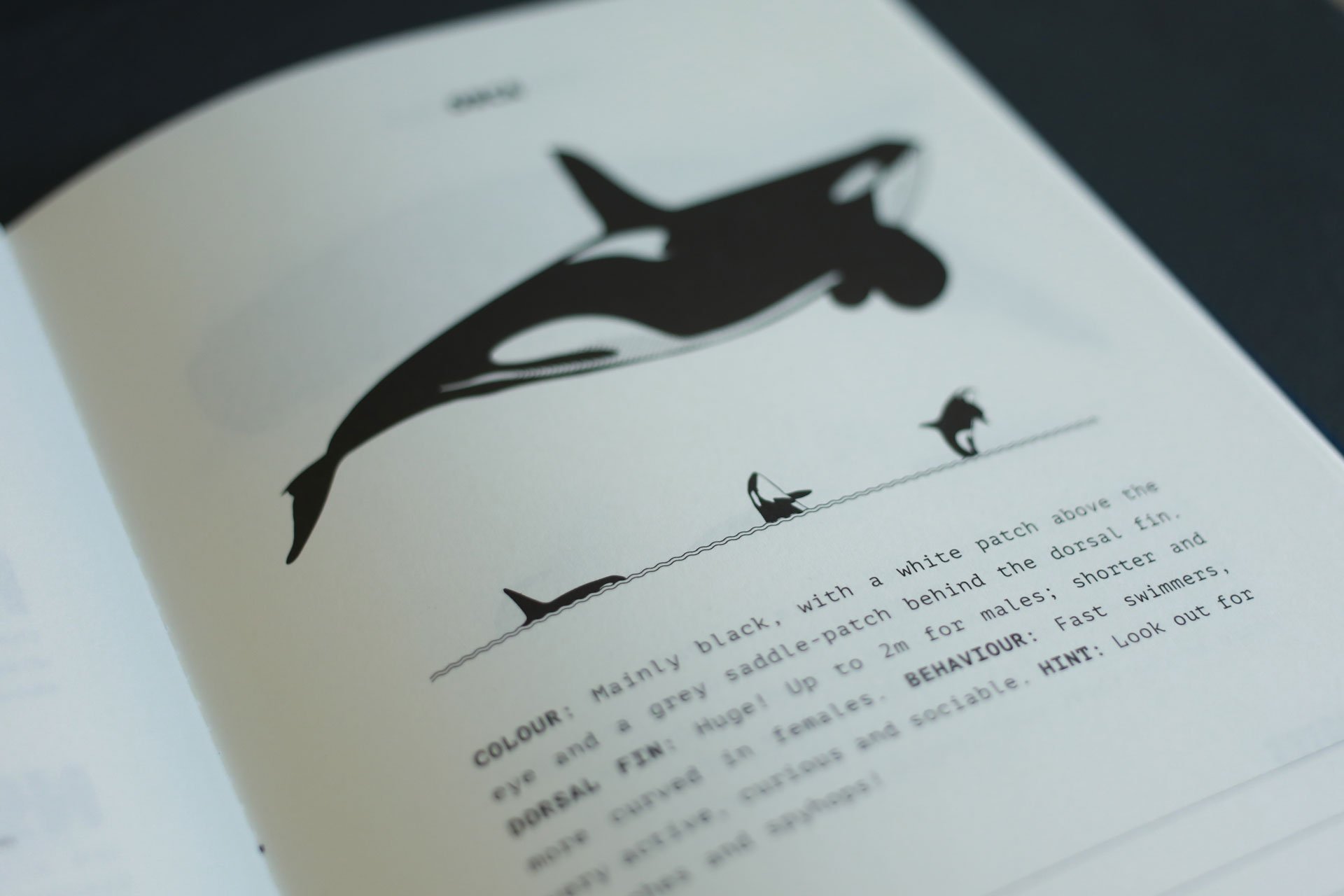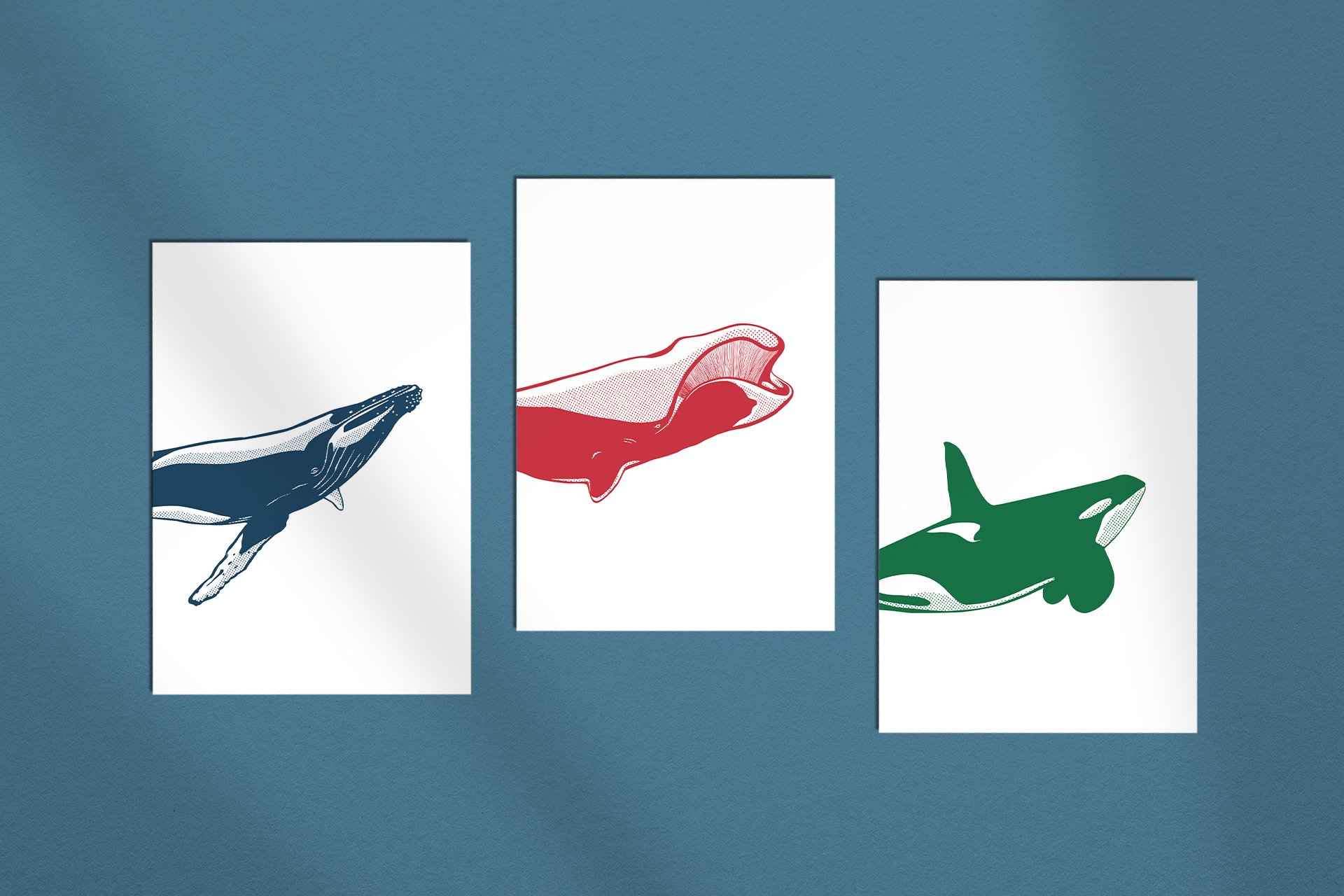FIN WhALEs
The second largest animals of all time. You can meet them almost anywhere. But you have to be quick!
Photo: Oliver Dirr / Whaletrips
REVIEW: Fin Whales
In almost all important whale disciplines, the fin whale is just behind the blue whale. It is only ahead in terms of numbers. And that clearly. This also makes it interesting for whale watching.
Second places are annoying and ungrateful, especially if you are always second in every discipline. Just like the fin whale. Actually, the fin whale would be the biggest, heaviest and most impressive animal that has ever lived on this planet, including all the dinosaurs. Actually. Because, annoyingly, the blue whale is also swimming around in these oceans at exactly the same time, and it is actually even bigger, heavier and more impressive.
The fin whale is also clearly ahead of most other whales in terms of blow height, fluke size, daily feeding rate and other important internal whale rankings – but at the same time well behind the blue whale. This performance makes the fin whale the second most impressive animal of all time.
One area where the fin whale is clearly ahead, however: In numbers. While there are only a few thousand blue whales left worldwide after the excessive whaling of the 19th and 20th centuries, the equally excessively hunted fin whales have for some reason recovered much better – there are probably around 120,000 animals worldwide again.
“The fin whale can only smile wearily at the blue whale’s 30 km/h - as it can reach speeds of up to 47 km/h and is therefore often referred to as the greyhound of the seas.”
And this is exactly what makes fin whales so interesting for whale watchers: the chances of spotting one are around ten times higher than with a blue whale – and the experience itself is just as impressive. After all, a large fin whale is just as big as a regular-sized blue whale.
Being in the middle of the sea and without any scale for comparison, it is very difficult to estimate the size anyway. Blue and fin whales are also very similar in their overall appearance, both swim along relatively unperturbed and show little interest in whale watchers travelling with them.
Fin and blue whales are quite similar in size and behaviour. Occasionally they even mate with each other. The whale in the picture at the top is most likely such a hybrid whale.
A fin whale is therefore a very interesting whale for whale watchers. As it also swims around extremely fast and unpredictably in a zig-zag course, fin whale watching is a real challenge and the very best lesson, especially for inexperienced whale watchers. If you don't lose sight of a fin whale, you won't be left behind by any other whale.
Incidentally, speed is the only discipline in which the blue whale is no match for the fin whale: The fin whale can only smile wearily at the blue whale's top speed of 30 km/h – as it can reach up to 47 km/h and is therefore often called "the greyhound of the seas".
Photo: Oliver Dirr / Whaletrips
Size
Fin whales reach a length of 18 to max. 27 metres. Females are slightly larger than males. Weight: approx. 100 tonnes.
Colour
Light to dark grey without speckles. White belly. Asymmetrical colouring: the right side of the lower jaw is white, the left is not.
FORM
Streamlined body. With a similar length and half the weight, much slimmer than the blue whale.
Blow
Tall, narrow blow, 4 to 6 metres, and thus noticeably lower than the blue whale’s.
Fin
Small and very far back, significantly larger and more crescent-shaped than the blue whale’s. Variable in shape and angle.
FLUKE
Thick tail. Very broad, triangular fluke with white underside and distinct notch.
Behaviour
Inconspicuous and uninterested in boats. Often swims in zig-zags. Not very active on the surface, breaches very rarely.
Dives
Can dive to a depth of 200 metres. Usually underwater for between 3 and 10 minutes, maximum 15 minutes, often resurfaces in a completely different place.
Numbers
After excessive hunting, the populations have recovered somewhat. There are probably around 120,000 fin whales worldwide.
Photo: Oliver Dirr / Whaletrips
CHECKLIST: FIN Whales
The asymmetrical colouring on the right side of the head is the easiest way to recognise a fin whale. If it swims close to the surface, the light-coloured side is clearly visible.
Fin whales are more social than blue whales, so they often travel in smaller groups or pods, usually up to 5 animals. They behave similarly inconspicuously to blue whales and are similarly indifferent to boats. They usually swim at a speed of 7 to 12 kilometres per hour, somewhat slower when foraging, but can reach extreme speeds of up to 47 kilometres per hour when fleeing.
“The lower blow, the white jaw on the right side and the larger fin are the best way to distinguish fin whales from blue whales.”
Fin whales normally surface at a steeper angle than blue whales, so that you can see much more of the pointed head. This is followed by the high, loud blow, while the enormous back is clearly visible in the water. Sometimes the white right side of the snout can also be seen. The fin is usually only visible shortly after the last breath before a longer dive, not before, as the fin whale is too long for this.
On deeper dives, the back and tail become more curved, the fluke comes close to the surface but is usually not lifted. On shallower dives, the fin whale glides down at a shallower angle.
Fin whales rarely breach – but when they do, they often shoot the front half of their body out of the water several times in succession and then crash onto the water with a huge belly flop. All in all, however, this looks somewhat less acrobatic and graceful than that of humpback or right whales.
Photo: Oliver Dirr / Whaletrips
Where and when: FIN WhALEs
You can encounter fin whales in all oceans – but there are hardly any whale-watching tours that focus primarily on them. You tend to see them as a bonus.
Fin whales are rarely the main attraction of whale-watching tours – usually humpback whales, sperm whales, grey whales or orcas are the main attractions. However, in many places where you can observe these whales, you also have a good chance of encountering fin whales. Fin whales are therefore more likely a bonus on most of the tours.
The ideal companion for your next whale trip: In our shop you will find our TRAVEL NOTES in five great colours – with the most important whale information for your trip and plenty of space for your own notes, observations and memories. Order now!
Fin whales live in all oceans from pole to pole and regularly migrate between warm, low latitudes in winter and colder, high latitudes in summer. There are also some resident populations, e.g. in the Mediterranean and the Gulf of California.
In the Mediterranean, the fin whale is the only rorqual to be found and the only large whale apart from the sperm whale. Otherwise, fin whales are more likely to be found in the open sea and near the coast only if the water is deep enough.
You also have a very good chance of seeing them on tours in Greenland, Iceland, off the Azores, in the St. Lawrence of Quebec, the Mexican Baja California and off the coasts of New England and California.
Even more Whales
〰️
Even more Whales 〰️
Whaletrips Shop
The ideal Companion for your whale trip
All the whale facts you need while on the road – with plenty of space for own thoughts and observations!
Whaletrips Shop
Our Whales as Cards and Stickers
Colourful, finely illustrated, ready to stick on: Our whales are now available as stickers and greeting cards!
Whaletrips Shop
Beautiful whale Notebooks
Whether for travelling or at home: our high-quality whale notebooks come in five beautiful colours!
Whaletrips Shop
Our favourite photos for your home
Brightens any wall: a selection of our favourite motifs is available as elegant fine art print for your home.











